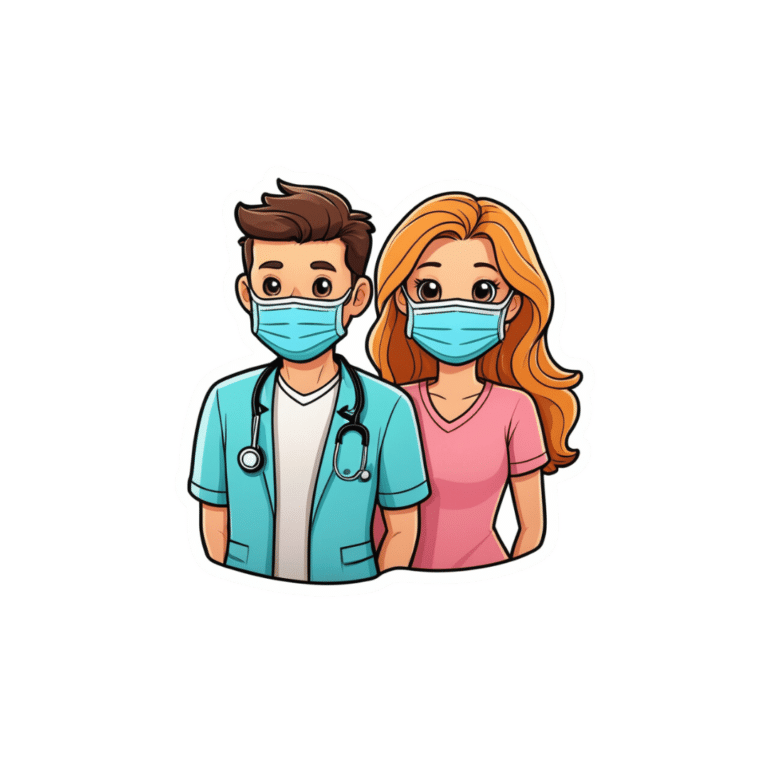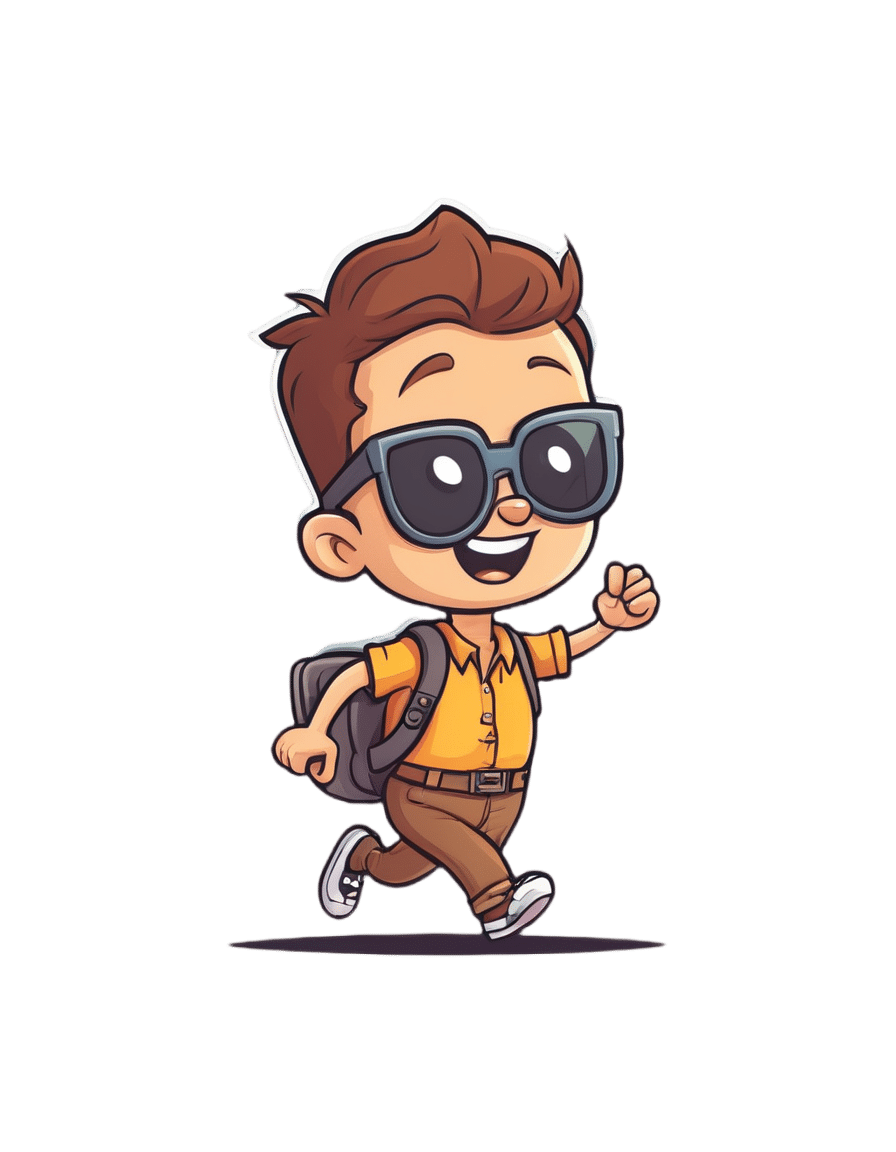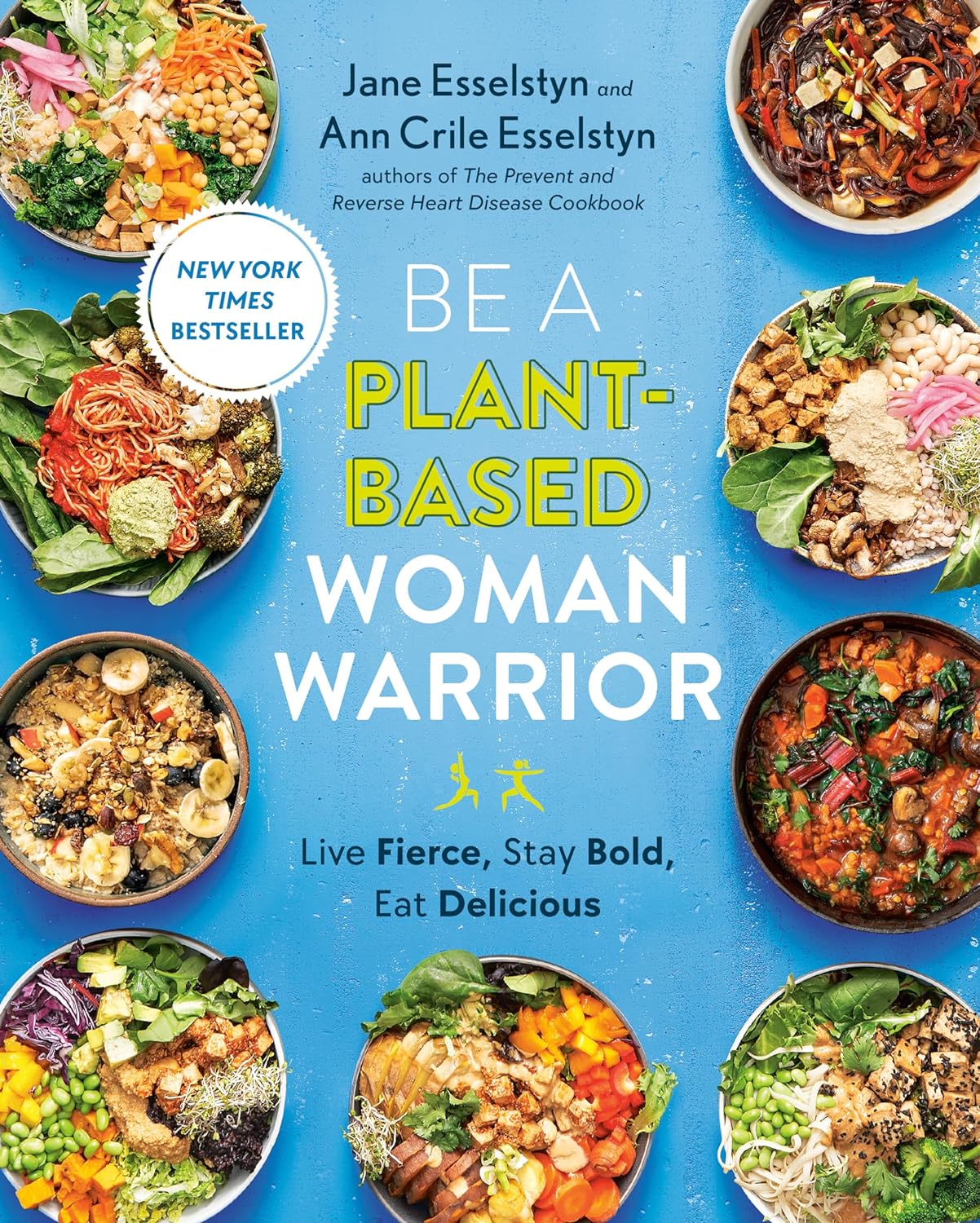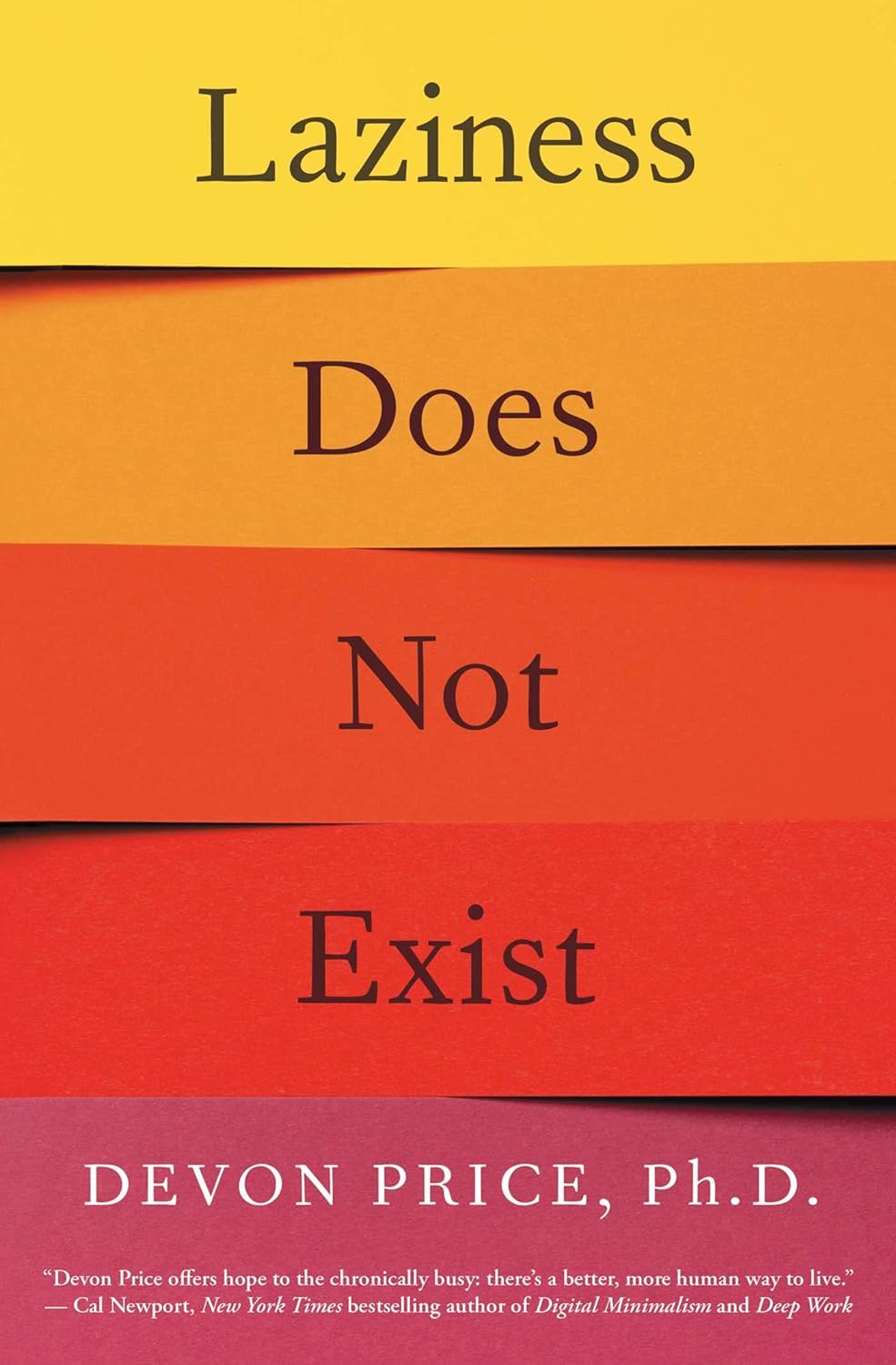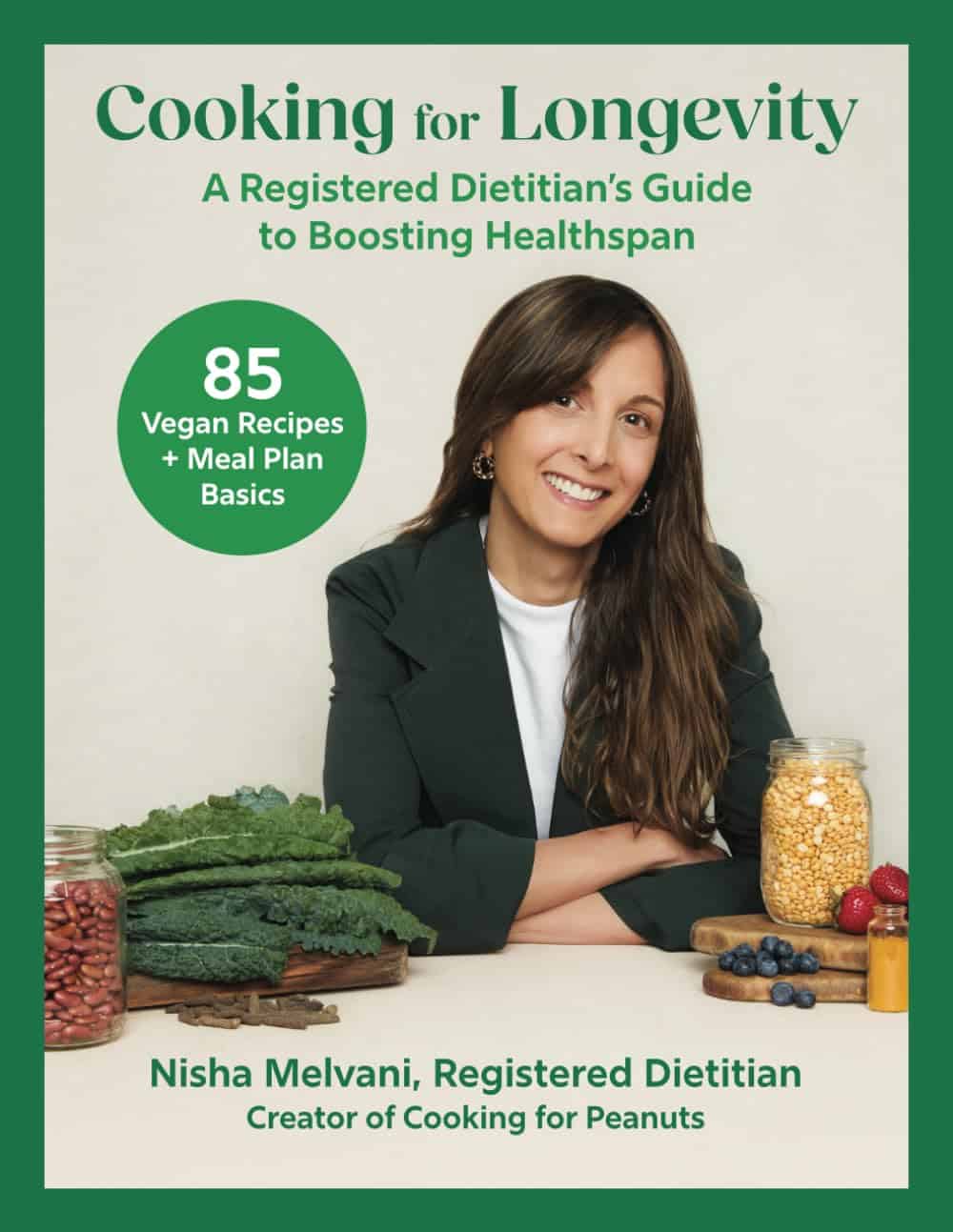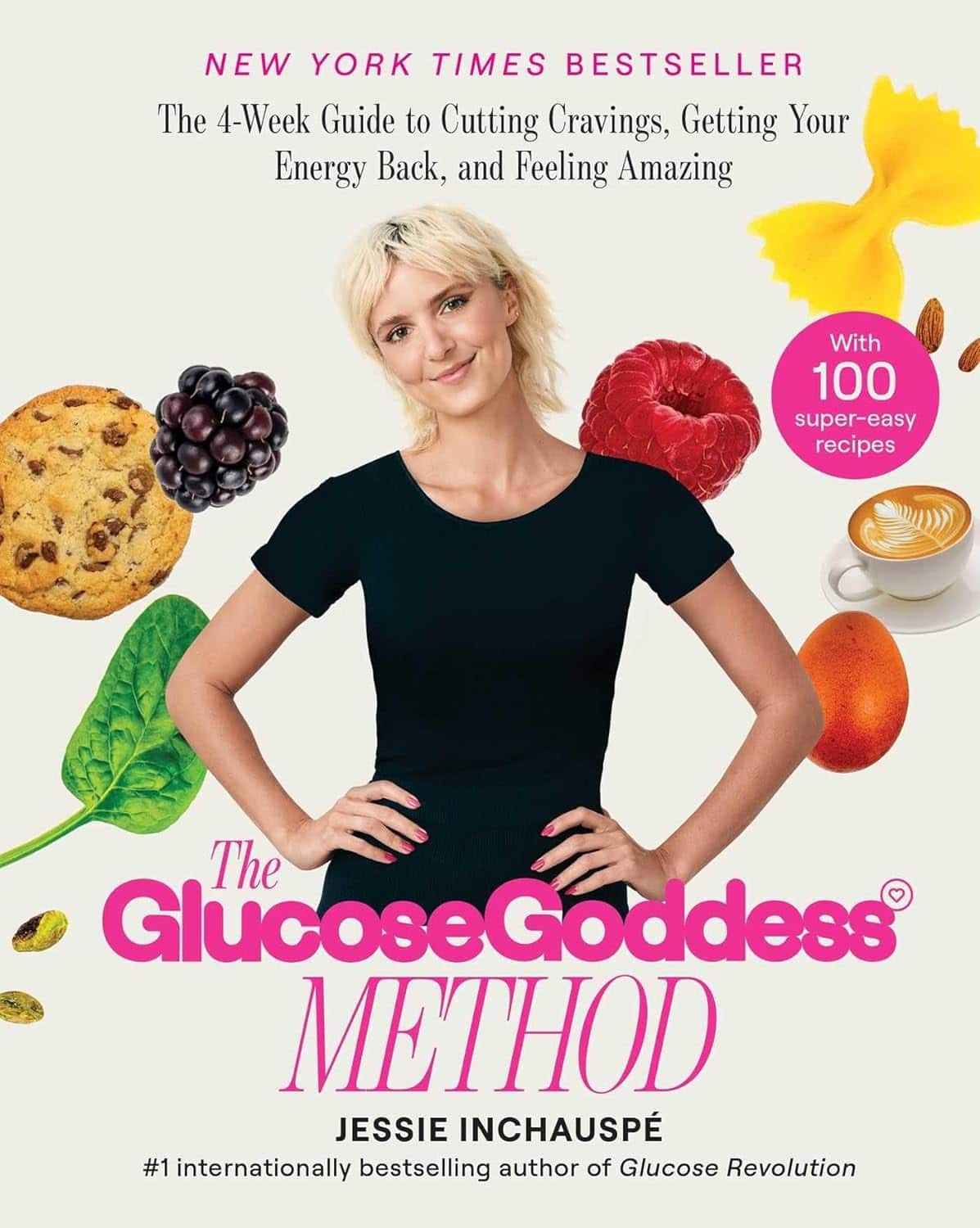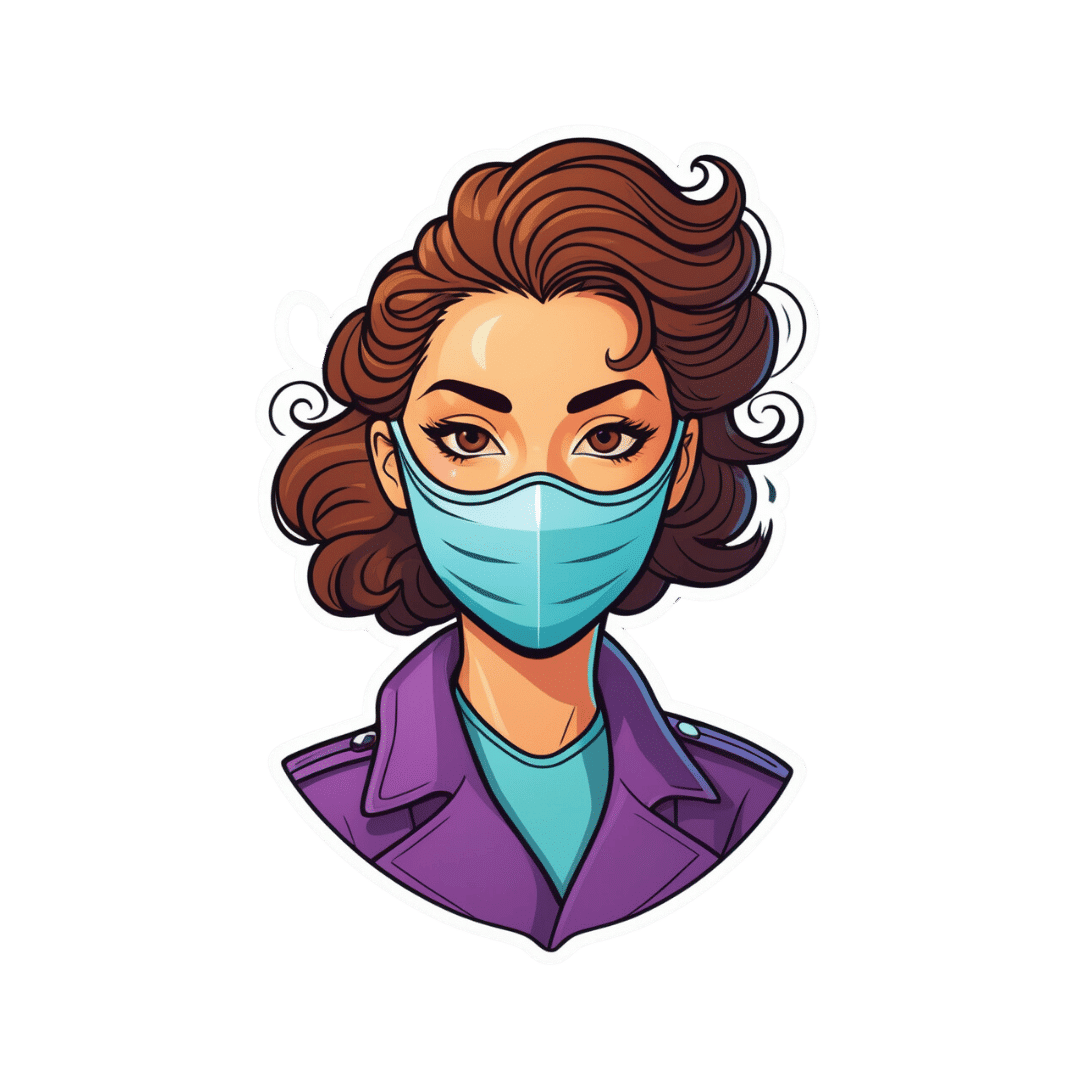
What immunocompromised people want you to know
10almonds is reader-supported. We may, at no cost to you, receive a portion of sales if you purchase a product through a link in this article.
While many people in the U.S. have abandoned COVID-19 mitigations like vaccines and masking, the virus remains dangerous for everyone, and some groups face higher risks than others. Immunocompromised people—whose immune systems don’t work as well as they should due to health conditions or medications—are more vulnerable to infection and severe symptoms from the virus.
Public Good News spoke with three immunocompromised people about the steps they take to protect themselves and what they want others to know about caring for each other.
[Editor’s note: The contents of these interviews have been condensed for length.]
PGN: What measures have you been taking to protect yourself since the COVID-19 pandemic began?
Tatum Spears, Virginia
From less than a year old, I had serious, chronic infections and have missed huge chunks of my life. In 2020, I quit my public job, and I have not worked publicly since.
I have a degree in vocal performance and have been singing my whole life, but I haven’t performed publicly since 2019. I feel like a bird without wings. I had to stop traveling. Since no one wears a mask anymore, I can’t go to the movies or social outings or any party.
All my friends live in my phone now. It’s a community of people—a lot of them are immunocompromised or disabled in some way.
There are a good portion of them who just take COVID-19 seriously and want to protect their health, who feel the existential abandonment and the burden of all of this. It’s really isolating having to step back from any sort of social life. I have to assess my risk every single time I leave the house.
Gwendolyn Alyse Bishop, Washington
I was hit by a car when I was very young. I woke up from surgery, and doctors told me I had lost almost all of my spleen. So, I was always the sickest kid in my school.
When COVID-19 hit, I started working from home. At first, I wore cloth masks. I didn’t really learn about KN95 masks until right around the time that COVID-19 disabled me. [Editor’s note: N95 and KN95 masks have been shown to be significantly more effective at preventing the transmission of viral particles than cloth masks.]
I actually don’t get out much anymore because I am disabled by long COVID now, but when I do leave, I wear a respirator in all shared air spaces. My roommate and I have HEPA filters going in every room.
And then we test. I have a Pluslife testing dock, and so we keep a weekly testing schedule with that and then test if there are any symptoms. I got reinfected [with COVID-19] last winter, and a Pluslife test helped me catch it early and get Paxlovid. [Editor’s note: Pluslife is a brand of an at-home COVID-19 nucleic acid amplification test, which has been shown to be significantly more effective at detecting COVID-19 than at-home antigen rapid tests.]
Abby Mahler, California
I have lupus, and in 2016, I started taking the drug hydroxychloroquine, which is an immunomodulator. I’m not as immunocompromised as some people, but I certainly don’t have a normal immune system, which has resulted in long-term infections like C. diff.
I started masking early. My roommates and I prioritize going outside. We don’t remove our masks inside in public places.
We are in a pod with one other household, and the pod has agreements on the way that we interact with public space. So, we will only unmask with people who have tested ahead of time. We use Metrix, an at-home nucleic acid amplification test.
While it’s not easy and it’s not the life that we had prior to COVID-19’s existence, it is a life that has provided us quite a lot of freedom, in the sense that we are not sick all the time. We are conscientiously making decisions that allow us to have a nice time without a monkey on our backs, which is freeing.
PGN: What do you want people who are not immunocompromised to know?
T.S.: Don’t be afraid to be the only person in a room wearing a mask. Your own health is worth it. And you have to realize how callous [people who don’t wear a mask are] by existing in spaces and breathing [their] air [on immunocompromised people].
People think that vaccines are magic, but vaccines alone are not enough. I would encourage people to look at the Swiss cheese model of risk assessment.
Each slice of Swiss cheese has holes in it in different places, and each layer represents a layer of virus mitigation. One layer is vaccines. Another layer is masks. Then there’s staying home when you’re sick and testing.
G.A.B.: I wish people were masking. I wish people understood how likely it is that they are also now immunocompromised and vulnerable because of the widespread immune dysregulation that COVID-19 is causing. [Editor’s note: Research shows that COVID-19 infections may cause long-term harm to the immune system in some people.]
I want people to be invested in being good community members, and part of that is understanding that COVID-19 hits the poorest the hardest—gig workers, underpaid employees, frontline service workers, people who were already disabled or immunocompromised.
If people want to be good community members, they not only need to protect immunocompromised and disabled people by wearing a mask when they leave their homes, but they also need to actually start taking care of their community members and participating in mutual aid. [Editor’s note: Mutual aid is the exchange of resources and services within a community, such as people sharing extra N95 masks.]
I spend pretty much all of my time working on LongCOVIDAidBot, which promotes mutual aid for people who have been harmed by COVID-19.
A.M.: An important thing to think about when you’re not disabled is that it becomes a state of being for all people, if they’re lucky. You will become disabled, or you will die.
It is a privilege, in my opinion, to become disabled because I can learn different ways of living my life. And being able to see yourself as a body that changes over time, I hope, opens up a way of looking at your body as the porous reality that it is.
Some people think of themselves as being willing to make concessions or change their behavior when immunocompromised people are around, but you don’t always know when someone is immunocompromised.
So, if you’re not willing to change the way that you think about yourself as a person who is susceptible [to illness], then you should change the way that you consider other people around you. Wearing a mask—at the very least in public indoor spaces—means considering the unknown realities of all the people who are interacting with that space.
This article first appeared on Public Good News and is republished here under a Creative Commons license.
Don’t Forget…
Did you arrive here from our newsletter? Don’t forget to return to the email to continue learning!
Recommended
Learn to Age Gracefully
Join the 98k+ American women taking control of their health & aging with our 100% free (and fun!) daily emails:
-
Watermelon vs Grapes – Which is Healthier?
10almonds is reader-supported. We may, at no cost to you, receive a portion of sales if you purchase a product through a link in this article.
Our Verdict
When comparing watermelon to grapes, we picked the watermelon.
Why?
It was close! And certainly both are very healthy.
Both fruits are (like most fruits) good sources of water, fiber, vitamins, and minerals. Any sugar content (of which grapes are slightly higher) is offset by their fiber content and polyphenols.
See: Which Sugars Are Healthier, And Which Are Just The Same?
While both are good sources of vitamins A and C, watermelon has about 10x as much vitamin A, and about 6x as much vitamin C (give or take individual plants, how they were grown, etc, but the overall balance is clearly in watermelon’s favor).
When it comes to antioxidants, both fruits are good, but again watermelon is the more potent source. Grapes famously contain resveratrol, and they also contain quercetin, albeit you’d have to eat quite a lot of grapes to get a large portion.
Now, having to eat a lot of grapes might not sound like a terrible fate (who else finds that the grapes are gone by the time the groceries are put away?), but we are comparing the fruits here, and on a list of “100 best foods for quercetin”, for example, grapes took 99th place.
Watermelon’s main antioxidant meanwhile is lycopene, and watermelon is one of the best sources of lycopene in existence (better even than tomatoes).
We’ll have to do a main feature about lycopene sometime soon, so watch this space
Take care!
Share This Post
-
Escape Self-Sabotage
10almonds is reader-supported. We may, at no cost to you, receive a portion of sales if you purchase a product through a link in this article.
Stop Making The Same Mistakes
It’s easy to think that a self-destructive cycle is easy to avoid if you have no special will to self-destruction. However, the cycle is sneaky.
It’s sneaky because it can be passive, and/or omissions rather than actions, procrastinations rather than obvious acts of impulse, and so forth.
So, they’re often things that specifically aren’t there to see.
How to catch them
How often do you think “I wish I had [done xyz]” or “I wish I had [done yxz] sooner”?
Now, how often have you thought that about the same thing more than once? For example, “I should have kept up my exercise”.
For things like this, habit-trackers are a great way to, well, keep track of habits. If for example you planned to do a 10-minute exercise session daily but you’ve been postponing it since you got distracted on January the 2nd, then it’ll highlight that. See also:
How To Really Pick Up (And Keep!) Those Habits
Speaking of habits, this goes for other forms of procrastination, too. For example, if you are always slow to get medical check-ups, or renew your prescriptions, or get ready for some regularly-occurring thing in your schedule, then set a reminder in your preferred way (phone app, calendar on the wall, whatever) and when the appointed time arrives (to book the check-up, renew the prescription, do your taxes, whatever), do it on the day you set your reminder for, as a personal rule for you that you keep to, barring extreme calamity.
By “extreme calamity” we mean less “running late today” and more “house burned down”.
Digital traps
Bad habits can be insidious in other ways too, like getting sucked into social media scrolling (it is literally designed to do that to you; you are not immune modern programming hijacking evolutionary dopamine responses).
Setting a screentime limit (you can specify “just these apps” if you like) will help with this. On most devices, this feature includes a sticky notification in the notification bar, that’ll remind you “27 out of 30 minutes remaining” or whatever you set it for. That’ll remind you to do what you went there to do, instead of getting caught in the endless scroll (and if you went there to just browse, to do so briefly).
Here’s how to set that:
Instructions for iOS devices | Instructions for Android devices
Oh, and on the topic of social media? If you find yourself getting caught up in unproductive arguments on the Internet, try the three-response rule:
- You reply; they reply (no progress made)
- You reply; they reply (still no progress made)
- You reply; they reply (still yet no progress made)
You reply just one more time: “I have a personal rule that if I’m arguing on the Internet and no progress has been made after three replies, I don’t reply further—I find this is helpful to avoid a lot of time lost to pointless arguing that isn’t going anywhere. Best wishes.”
(and then stick to it, no matter how they try to provoke you; best is to just not look until at least the next day)
When “swept up in love” gets to one of those little whirlpools…
The same works in personal relationships, by the way. If for example you are arguing with a loved one and not making progress, it can be good if you both have a pre-arranged agreement that either of you can, up to once on any given day, invoke a “time-out” (e.g. 30 minutes, but you agree the time between you when you first make this standing policy) during which you will both keep out of the other’s way, and come back with a more productive head on (remembering that things go best when it’s you both vs the problem, rather than vs each other).
See also:
Seriously Useful Communication Skills: Conflict Resolution
What if the self-sabotaging cycle is active and apparent?
Well, that is less sneaky, but certainly no less serious, and sometimes moreso. An obvious example is drinking too much; this is often cyclical in nature. We wrote about this one previously:
That article’s alcohol-specific, but the same advices go for other harmful activities, including other substance abuse (which in turn includes binge-eating), as well psychological addictions (such as gambling, for example).
Finally…
If your destructive cycle is more of a rut you’ve got stuck in, a common advice is to change something, anything, to get out of the rut.
That can be very bad advice! Because sometimes the change you go for is absolutely not the change that was needed, and is rather just cracking under pressure and doing something impulsive.
Here’s one way to actively get out of a slump:
Behavioral Activation Against Depression & Anxiety
Note: you do not have to be depressed or anxious to do this. But the point is, it’s a tool you can use even if you are depressed and/or anxious, so it’s a good thing to try for getting out of most kinds of slumps.
And really finally, here’s a resource for, well, the title speaks for itself:
When You Know What You “Should” Do (But Knowing Isn’t The Problem)
Take care!
Share This Post
-
Be A Plant-Based Woman Warrior – by Jane Esselstyn & Ann Esselstyn
10almonds is reader-supported. We may, at no cost to you, receive a portion of sales if you purchase a product through a link in this article.
Notwithstanding the title, this book is not about being a woman or a warrior, but let us share what one reviewer on Amazon wrote:
❝I don’t want to become a plant based woman warrior. The sex change would be traumatic for me. However, as a man who proudly takes ballet classes and Pilates, I am old enough not to worry about stereotypes. When I see a good thing, I am going to use it❞
The authors, a mother-and-daughter team in their 80s and 50s respectively, do give a focus on things that disproportionally affect women, and rectifying those things with diet, especially in one of the opening chapters.
Most the book, however, is about preventing/reversing things that can affect everyone, such as heart disease, diabetes, inflammation and the autoimmune diseases associated with such, and cancer in general, hence the dietary advice being good for most people (unless you have an unusually restrictive diet).
We get an overview of the pantry we should cultivate and curate, as well as some basic kitchen skills that will see us well for the rest of the book, such as how to make oat flour and other similar mini-recipes, before getting into the main recipes themselves.
About the recipes: they are mostly quite simple, though often rely on having pre-prepared items from the mini-recipes we mentioned earlier. They’re all vegan, mostly but not all gluten-free, whole foods, no added sugar, and as for oil… Well, it seems to be not necessarily oil-free, but rather oil-taboo. You see, they just don’t mention it. For example, when they say to caramelize onions, they say to heat a skillet, and when it is hot, add the onions, and stir until browned. They don’t mention any oil in the ingredients or in the steps. It is a mystery. 10almonds note: we recommend olive oil, or avocado oil if you prefer a milder taste and/or need a higher smoke point.
Bottom line: the odd oil taboo aside, this is a good book of simple recipes that teaches some good plant-based kitchen skills while working with a healthy, whole food pantry.
Click here to check out Be A Plant-Based Woman Warrior, and be a plant-based woman warrior!
Or at the very least: be a plant-based cook regardless of gender, hopefully without war, and enjoy the additions to your culinary repertoire
Share This Post
Related Posts
-
Laziness Does Not Exist – by Dr. Devon Price
10almonds is reader-supported. We may, at no cost to you, receive a portion of sales if you purchase a product through a link in this article.
Some cultures prize productivity as an ideal above most other things, and it’s certainly so in the US. Not only is this not great for mental health in general, but also—as Dr. Price explains—it’s based on a lie.
Generally speaking, when a person appears lazy there is something stopping them/you from doing better, and it’s not some mystical unseen force of laziness, not a set character trait, not a moral failing. Rather, the root cause may be physical, psychological, socioeconomic, or something else entirely.
Those causes can in some cases be overcome (for example, a little CBT can often set aside perfectionist anxiety that results in procrastination), and in some cases they can’t, at least on an individual level (disabilities often stubbornly remain disabling, and societal problems require societal solutions).
This matters for our mental health in areas well beyond the labor marketplace, of course, and these ideas extend to personal projects and even personal relationships. Whatever it is, if it’s leaving you exhausted, then probably something needs to be changed (even if the something is just “expectations”).
The book does offer practical solutions to all manner of such situations, improving what can be improved, making easier what can be made easier, and accepting what just needs to be accepted.
The style of this book is casual yet insightful and deep, easy-reading yet with all the acumen of an accomplished social psychologist.
Bottom line: if life leaves you exhausted, this book can be the antidote and cure
Click here to check out Laziness Does Not Exist, and break free!
Don’t Forget…
Did you arrive here from our newsletter? Don’t forget to return to the email to continue learning!
Learn to Age Gracefully
Join the 98k+ American women taking control of their health & aging with our 100% free (and fun!) daily emails:
-
Cooking for Longevity – by Nisha Melvani
10almonds is reader-supported. We may, at no cost to you, receive a portion of sales if you purchase a product through a link in this article.
Before it gets to the recipes, this book kicks off with a lot of science (much more than is usual for even healthy-eating recipe books), demystifying more nutrients than most people think of on a daily basis, what they do and where to get them, and even how to enhance nutrient absorption.
As well as an up-front ingredients list, we additionally get not just meal planning advice in the usual sense of the word, but also advice on timing various aspects of nutrition in order to enjoy the best metabolic benefits.
The recipes themselves are varied and good. It’s rare to find a recipe book that doesn’t include some redundant recipes, and this one’s no exception, but it’s better to have too much information than too little, so it’s perhaps no bad thing that all potentially necessary bases are covered.
In terms of how well it delivers on the title’s promised “cooking for longevity” and the subtitle’s promised “boosting healthspan”, the science is good; very consistent with what we write here at 10almonds, and well-referenced too.
Bottom line: if you’d like recipes to help you live longer and more healthily, then this book has exactly that.
Click here to check out Cooking For Longevity, and cook for longevity!
Don’t Forget…
Did you arrive here from our newsletter? Don’t forget to return to the email to continue learning!
Learn to Age Gracefully
Join the 98k+ American women taking control of their health & aging with our 100% free (and fun!) daily emails:
-
The Glucose Goddess Method – by Jessie Inchausspé
10almonds is reader-supported. We may, at no cost to you, receive a portion of sales if you purchase a product through a link in this article.
We’ve previously reviewed Inchausspé’s excellent book “Glucose Revolution”. So what does this book add?
This book is for those who found that book a little dense. While this one still gives the same ten “hacks”, she focuses on the four that have the biggest effect, and walks the reader by the hand through a four-week programme of implementing them.
The claim of 100+ recipes is a little bold, as some of the recipes are things like vinegar, vinegar+water, vinegar+water but now we’re it’s in a restaurant, lemon+water, lemon+water but now it’s in a bottle, etc. However, there are legitimately a lot of actual recipes too.
Where this book’s greatest strength lies is in making everything super easy, and motivating. It’s a fine choice for being up-and-running quickly and easily without wading through the 300-odd pages of science in her previous book.
Bottom line: if you’ve already happily and sustainably implemented everything from her previous book, you can probably skip this one. However, if you’d like an easier method to implement the changes that have the biggest effect, then this is the book for you.
Click here to check out The Glucose Goddess Method, and build it into your life the easy way!
Don’t Forget…
Did you arrive here from our newsletter? Don’t forget to return to the email to continue learning!
Learn to Age Gracefully
Join the 98k+ American women taking control of their health & aging with our 100% free (and fun!) daily emails:

